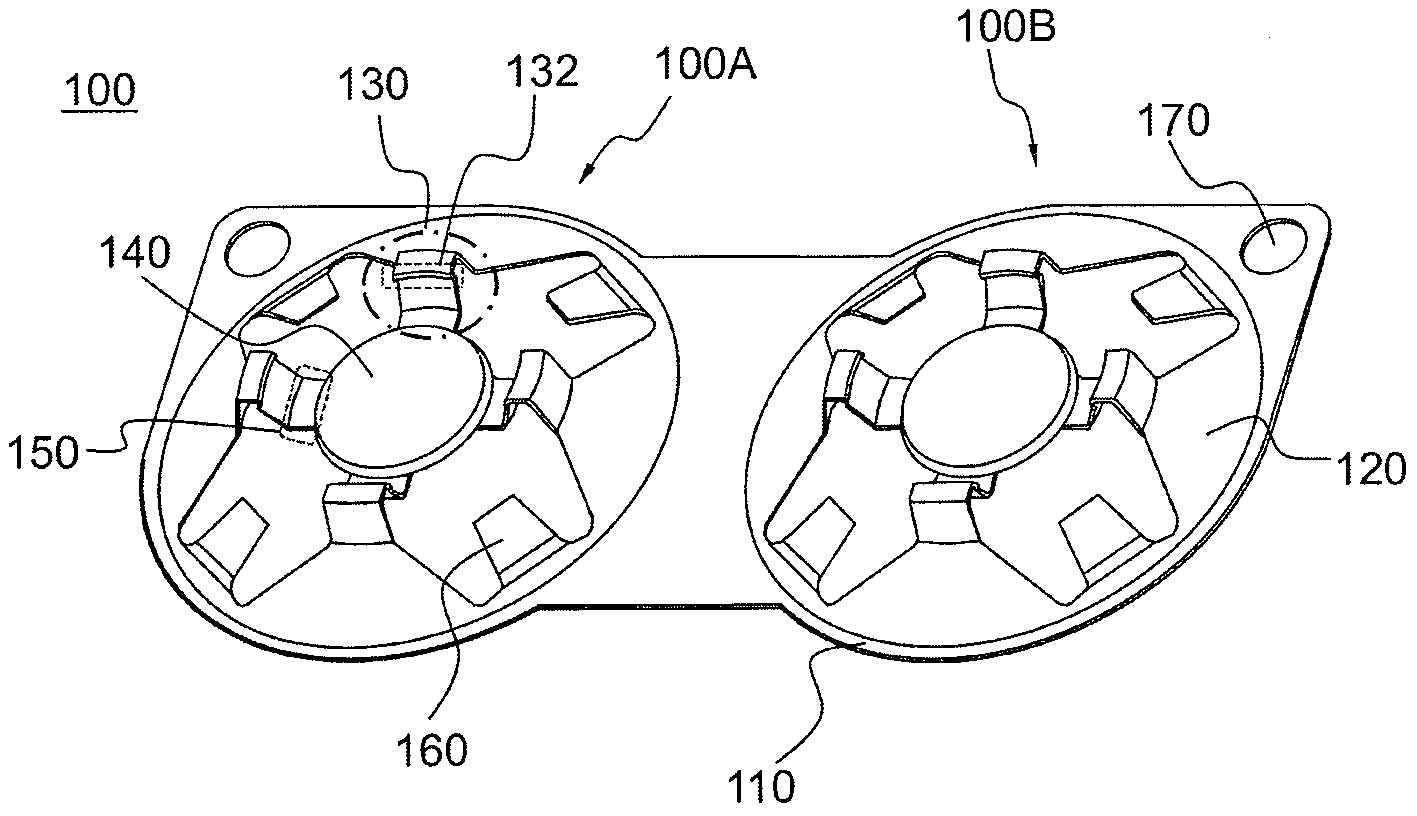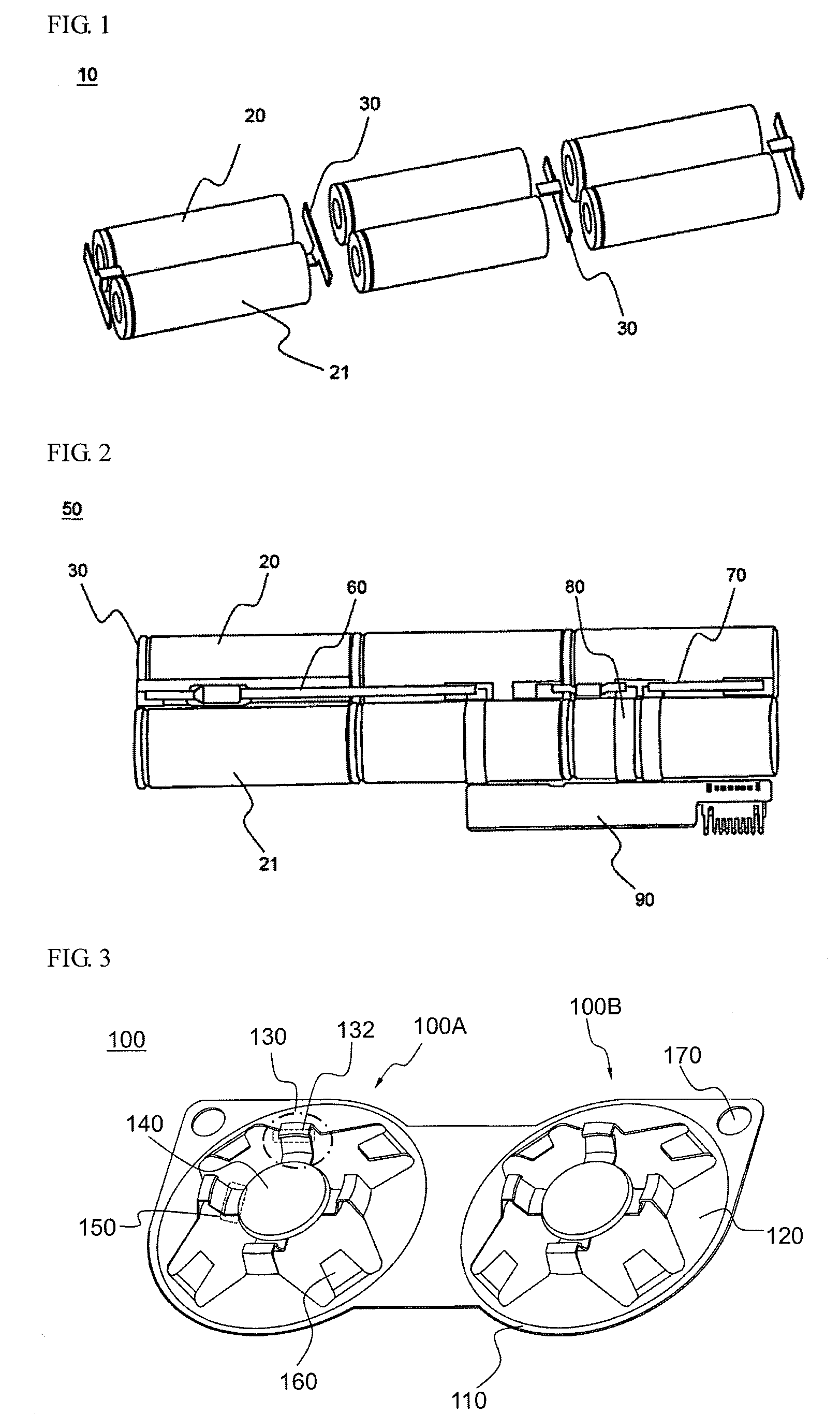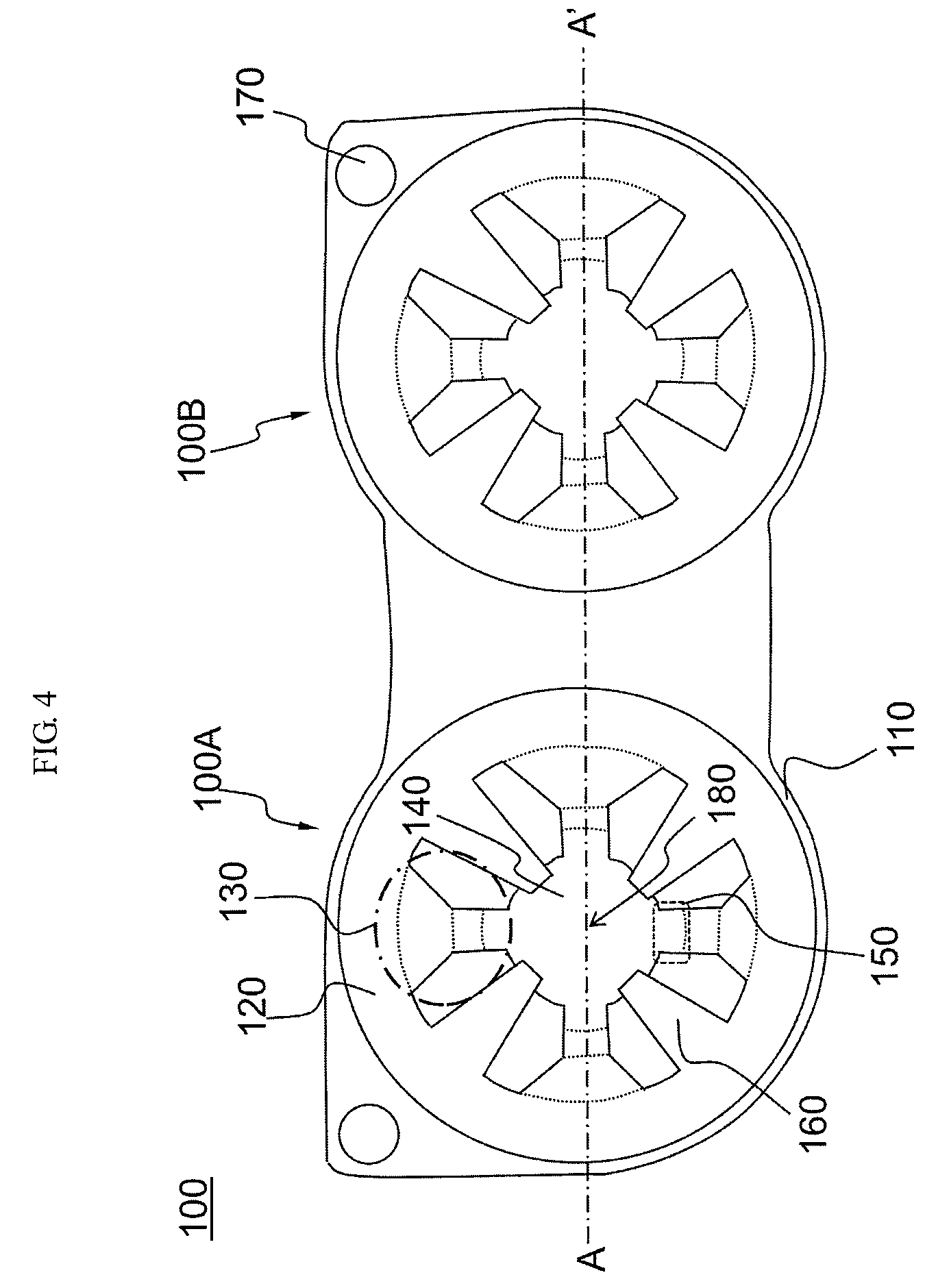Electrical connecting member of assembling type and secondary battery pack containing the same
a technology of connecting parts and secondary batteries, which is applied in the direction of battery connections, coupling device connections, cell components, etc., can solve the problems of difficult arrangement of cylindrical batteries in a stacked structure, low safety in abnormal conditions, and lithium secondary batteries, so as to prevent the connection of the connection member, prevent the connection, and prevent the connection.
- Summary
- Abstract
- Description
- Claims
- Application Information
AI Technical Summary
Benefits of technology
Problems solved by technology
Method used
Image
Examples
Embodiment Construction
[0069]Now, preferred embodiments of the present invention will be described in detail with reference to the accompanying drawings. It should be noted, however, that the scope of the present invention is not limited by the illustrated embodiments.
[0070]FIG. 3 is a perspective view illustrating a connection member according to a preferred embodiment of the present invention, FIG. 4 is a bottom view of FIG. 3, and FIG. 5 is a vertical sectional view taken along line A-A′ of FIG. 4.
[0071]Referring to these drawings, the connection member 100 according to the present invention includes two terminal connection parts 100A and 100B connected to each other and circuit connection terminal parts 170 for connection to an external circuit.
[0072]Each of the terminal connection parts 100A and 100B includes a first contact part 110 electrically connected to an electrode terminal of a lower battery cell (not shown), the first contact part 110 having a predetermined width c, an elastic part 120 exten...
PUM
| Property | Measurement | Unit |
|---|---|---|
| tilt angle | aaaaa | aaaaa |
| angle | aaaaa | aaaaa |
| tilt angle | aaaaa | aaaaa |
Abstract
Description
Claims
Application Information
 Login to View More
Login to View More - R&D
- Intellectual Property
- Life Sciences
- Materials
- Tech Scout
- Unparalleled Data Quality
- Higher Quality Content
- 60% Fewer Hallucinations
Browse by: Latest US Patents, China's latest patents, Technical Efficacy Thesaurus, Application Domain, Technology Topic, Popular Technical Reports.
© 2025 PatSnap. All rights reserved.Legal|Privacy policy|Modern Slavery Act Transparency Statement|Sitemap|About US| Contact US: help@patsnap.com



